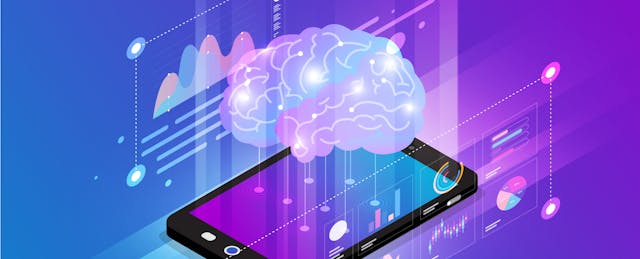When Ayanna met Cozmo the robot, both she and the robot lit up. “it was like she met a new best friend,” her Boys and Girls Club teacher James Carter said. “They just clicked.” And when Cozmo said her name, “she was so excited she didn’t know what to do with herself.”
Even better, it was Ayanna who had programmed Cozmo to say it.
Ayanna is one of roughly 50 kids at the Boys and Girls Club of Western Pennsylvania who are using a new artificial intelligence kit created by ReadyAI. It’s one of several initiatives that promise to make AI as common in the classroom as it’s becoming in our lives.
Artificial intelligence powers Amazon’s recommendations engine, Google Translate and Siri, for example. But few U.S. elementary and secondary schools teach the subject, maybe because there are so few curricula available for students. Members of the “AI for K-12” work group wrote in a recent Association for the Advancement of Artificial Intelligence white paper that “unlike the general subject of computing, when it comes to AI, there is little guidance for teaching at the K-12 level.”
But that’s starting to change. Among other advances, ISTE and AI4All are developing separate curricula with support from General Motors and Google, respectively, according to the white paper. Lead author Dave Touretzky of Carnegie Mellon has developed his own curriculum, Calypso. It’s part of the “AI-in-a-Box” kit, which is being used by more than a dozen community groups and school systems, including Carter’s class.
Tara Chklovski, founder of the global training nonprofit Iridescent, predicts that 2019 will see a wave of simplified curricula for students as young as eight so they can start learning basic concepts. “It’s very important for education groups to face [AI] head-on,” she said.
What should these curricula look like? The AI for K-12 white paper lists five core concepts. On the technical side, students should learn that computers “perceive the world using sensors,” “can learn from data” and then use that data to create models for reasoning, the paper says. On the ethical side, they should learn that it is difficult to make AI applications “interact comfortably with humans,” and that AI can both help and harm society.
That last tenet will be central to the forthcoming $2 million Ryden Program for Innovation and Leadership in Artificial Intelligence at the North Carolina School of Science and Mathematics, chancellor Todd Roberts said. AI and machine learning are going to have “such a large impact in shaping our lives, the large ‘our,’ that it’s important that students understand … what can be the benefit of that and what should be guarded against,” he said.
Along with placing a strong emphasis on student research, faculty at the selective public boarding school will develop their own curriculum with feedback from universities and the larger AI community, then make it available to other schools via GitHub or a similar site. “We’re hoping to create opportunities for students here at our school and more broadly to learn about AI,” Roberts said.
Looking at academic rigor, Chklovski said that curricula should eventually go beyond dragging a “machine learning” block into a chain of if-then events and learn to create the algorithm that tells the computer how to analyze and respond to input. The robot Cozmo would seem to fit that bill: Its basic coding platform is a simple visual system based on MIT’s Scratch Blocks, but there’s also a more advanced option based on Python.
More broadly, Chklovski said that AI lessons should be project-based and hands-on. Iridescent’s AI Family Challenge focuses on using the technology to solve societal problems. And because “AI is kind of scary and cold,” the free curriculum uses a gentle approach “to make it easy for a completely non-technical person to get started and become curious,” she said.
An introductory session doesn’t even require a computer. Instead, each family creates a game board with a “supercomputer”—which can be a person—who is “programmed” to make a decision a certain way depending on the inputs.
Iridescent is particularly concerned about who gets to learn these skills. The organization, which provides education and training to typically underserved groups, has already taught AI in a refugee camp. “Low-income communities are also hearing about AI in the media and there’s a lot of curiosity and fear but no one’s reaching out to them,” Chklovski said.
That’s what’s happening at the Boys and Girls Club of Western Pennsylvania. AI-in-a-Box retails at $2,999, according to ReadyAI’s website, and includes several Cozmo robots, tablets, laptops and game controllers. However, the company has loaned the robots to the Boys and Girls Club.
Club STEM director Christine Nguyen said she was grateful for the opportunity. When thinking about what to be when you grow up, “you can’t even start to dream if you don’t know opportunities exist,” she said. “ReadyAI has allowed our kids to dream a little bit.”
Before starting the AI class in the fall, most of the 6- to 11-year-olds at the Boys and Girls Club didn’t understand what artificial intelligence meant, Carter said. Watching them pick up on the concepts and learn to program Cozmo “brings a spark to my heart,” he said.
And perhaps to his stomach: “Last class we taught Cozmo how to order a hot dog for us,” Carter said.


